
What an incredible morning it was today for SpaceX, NASA, and the entire aerospace industry.
Here’s what the SpaceX launch pad in Boca Chica, TX looked like this morning:
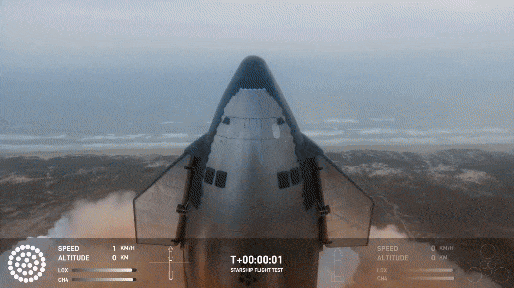
Today was only the third test launch of the towering 397-foot, combined Super Heavy Booster and its companion Starship.
It was an ambitious mission — not just to reach space… but to reach orbital velocity, a speed at which the Starship could have entered into a low-Earth orbit (LEO).
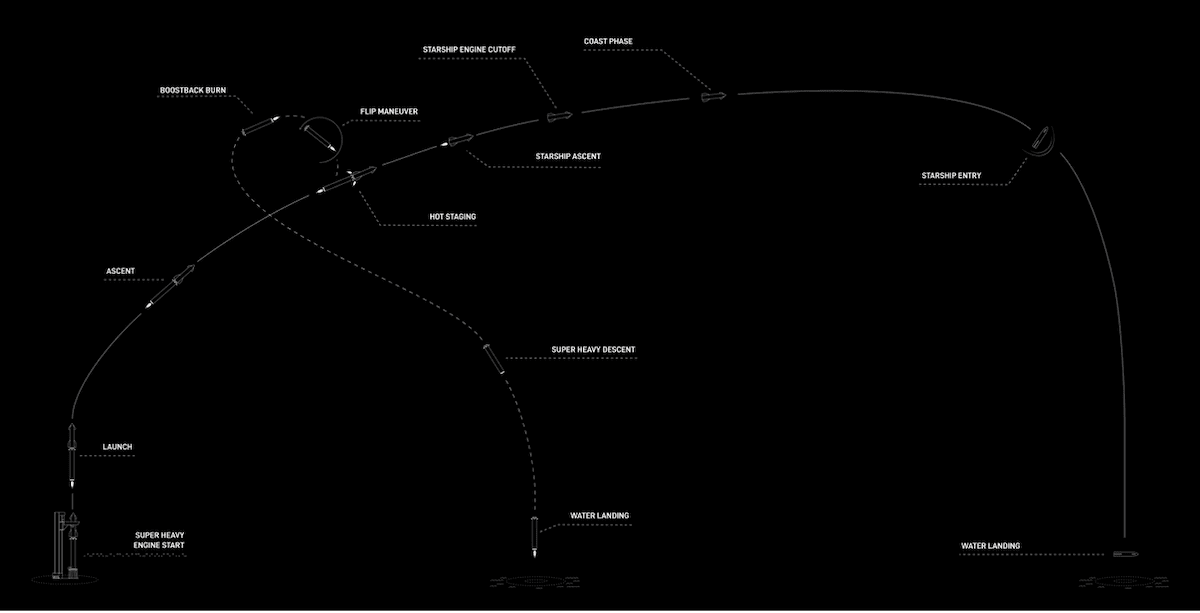
It was a stunning success.
The head of NASA, Bill Nelson, congratulated SpaceX on a “successful test flight.”
For the second time, SpaceX was able to demonstrate its “hot-staging separation,” where the Super Heavy Booster leaves three of its 33 Raptor rocket engines burning while the Starship’s 6 Raptor engines ignite.
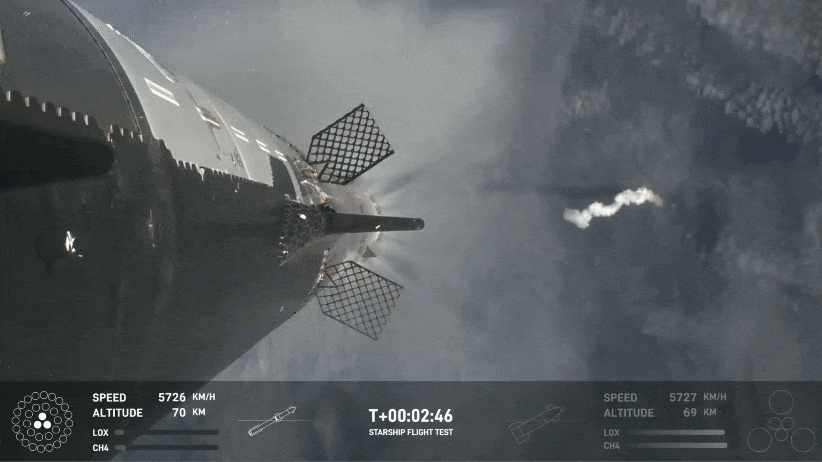
Seen above is the hot-staging separation from this morning. The view is just fantastic.
This technique is unique to SpaceX and designed to improve the efficiency of each launch. By leaving the 3 Raptor engines burning on the Super Heavy Booster, the payload capacity of the Starship can be increased by about 10%.
Ultimately, that will result in lower launch costs to orbit — the key to unlocking a flourishing space economy.
After the separation took place, it was incredible to see the Starship galavanting in space at an altitude of 230 kilometers.
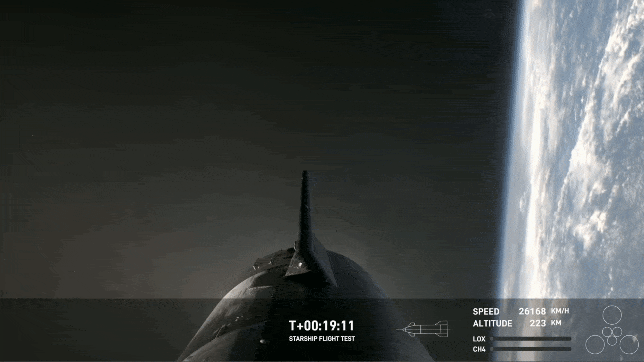
And the views of the Starship re-entering Earth’s atmosphere were incredibly beautiful.
As we can see below, the plasma dancing around the Starship is caused by the friction and compression of atmospheric gases as the Starship returns to Earth.

Making the footage even more interesting is that it was streamed real-time from the Starship, directly to a SpaceX Starlink broadband satellite, which then transmitted the video stream back to Earth.
The mission was a success not only because the Starship reached orbital velocity, it was also able to test two critical capabilities during its short flight to space.
The Starship was able to open and close its payload door during the flight.
Typical payloads will be things like satellites, rocket fuel, water, equipment needed for the moon or Mars, or modules for a new space station.
SpaceX also demonstrated the ability to move fuel from one tank to another.
This was done as a representation of future refueling missions in space. Longer missions to the moon or Mars will require at least two Starships. One will support the desired payloads and/or astronauts, and the other will have a payload of fuel to be given to the other Starship for its longer mission.
Below is a mockup of what that might look like:
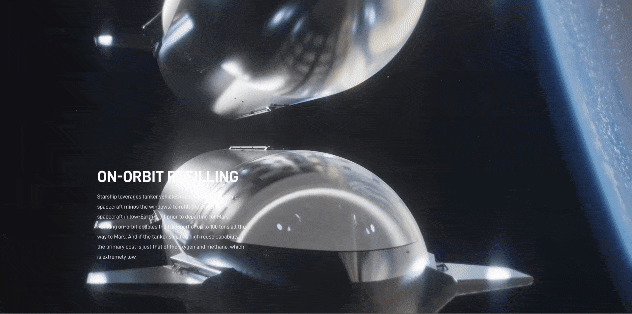
While both the Super Heavy Booster and the Starship burned up before a splashdown in the ocean, it was still mission accomplished for SpaceX.
After all, this was just the third test launch.
On April 20, 2023, the Starship was able to successfully launch off the launch pad for the first time. It got above the Karman line (e.g. into space above 100 kilometers).
Starship’s second launch was on November 18, 2023. Starship made it to 150 kilometers in altitude and successfully demonstrated the hot-staging separation. (We celebrated this with our own launch of Outer Limits — A Historic Day for the New Space Economy, our inaugural issue.)
All of this has been accomplished in just one year.
This has been possible because Musk and his team have taken an ethos from Silicon Valley of innovating, failing quickly, learning from what went wrong, and then making fast improvements so that the technology can be tested and improved again.
This kind of model is typically applied in software-related businesses and was highly uncharacteristic of the aerospace industry of the past, when hardware and expensive launch costs were perceived as obstacles to that approach.
SpaceX has consistently proven its critics wrong over and over, and it has ignited an entirely new class of aerospace companies that are applying the same principles to their own research and development.
The reality is that the test launch today was all SpaceX needed to forge ahead.
With the incredible momentum in just the last year, it is already building a second Starship launch pad so that it can increase the cadence of future test launches in the next 12 months.
Why the rush? And an even better question: Why is NASA so thrilled with the progress today?
Outer Limits readers can sense it in the air.
There is a general acceleration of the pace of change happening in tech today. Never again will the pace of change be as slow as it is today.
This is especially true in the world of space exploration, artificial intelligence, and biotechnology.
The Artemis 3 mission to the moon is currently scheduled for late 2026. It will be the first crewed mission to the moon, which will be dependent on the Starship for safely landing astronauts on the moon’s surface.
Which means SpaceX has a lot of work to do over the next two years.
The current plans are to have a minimum of six Starship launches this year. And I would expect that there will be at least one Starship launch a month in 2025, in order to keep to NASA’s schedule.
If any company can maintain that pace, it’s SpaceX.
It had 98 launches in 2023, setting a record more than any company, or country, has ever achieved in a single year. And this year the target is 144 missions to space. That represents a launch just about every two and a half days. How’s that for acceleration?
No aerospace company or government space agency has ever come close to SpaceX in terms of the consistency and cadence in missions to space.
We’re watching history in and making. And it won’t be long before we see commercial space travel to the moon.
Welcome to the Outer Limits with Jeff Brown. New reader? We encourage you to visit our FAQ, which you can access right here. You may also catch up on past issues right here in the Outer Limits archive.
If you have any questions, comments, or feedback, we always welcome them. We read every email and address the most common threads in the Friday AMA. Please write to us here.